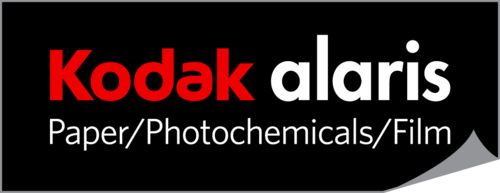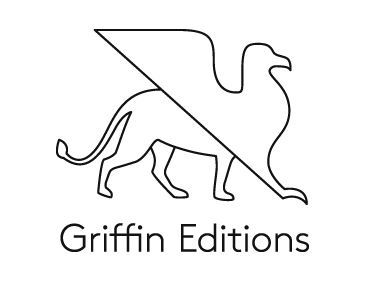Interview: Leah Schretenthaler
Leah Schretenthaler received the Film Photo Award in the Fall of 2019. One year later (plus a bit of a delay due to Covid19 travel restrictions), Julia Bennett and Leah have a chat about her evolving project.
Leah Schretenthaler: Aloha Julia. This is Leah Schretenthaler.
Julia Bennett: Hey! Where in the world are you!
LS: I'm in Milwaukee
JB: Nice! Are you typically there year round? How often do you return to Hawaii to shoot?
LS: I try to go home twice a year to gather supplies (shoot, take molds of the land, and do research) but Covid put a pause on it. When I come back to the mainland I use everything I gather to continue work. Right now I live and teach in MKE.
© Leah Schretenthaler
Akaka Falls Stairs © Leah Schretenthaler
Mauna Kea (Submillimeter Array) © Leah Schretenthaler
Haunama Bay © Leah Schretenthaler
JB: Do you feel like you've learned anything new or made any discoveries about the work since you've had so much time to sit with the new images? We'll get into this, but you've used the prize from Film Photo Award to dive into some new and different approaches to your previous work.
LS: I think with this new work I have come to realize that the images move closer to the possible tourist images or possible postcard images. With this "down time" from traveling home I have experimented more with digital paper. Since all of my work is film, this was the first time I really dived into the digital world. During the shutdown, I bought a digital printer and sample packs of paper and got to investigate what each paper does under different laser settings. There were some really cool results with some of the paper but I had to remind myself what I wanted the work to say. With the new prints, I have played around with different laser settings to give areas that I have burned away more definition or context clues.
JB: What prompted you to dive into digital and color? Even though the process is similar, I think the new work does begin to say something new about the landscape and the specific issues Hawaii is experiencing with development and tourism from the mainland. I'm thinking about how even during the pandemic, Honolulu airport had lines backed up to the gates of tourists coming in for a getaway. Even though we weren't locked down when you produced this work, has the pandemic made you think differently about, as you said, what you want the work to say?
Ford Island © Leah Schretenthaler
LS: Since starting the project in black and white I have always wanted to take it into color. I felt like I was hitting on a certain aspect with the black and white. The expansion of the black and white series is using old photographs of Hawaii and laser etching into those. The more I researched and visited home the more I felt like I had to address the areas that the black and white images were not addressing.
This award was a good spring-board into color and my research. While I have been researching in school about imagery of Hawaii, I found that a lot of information maybe was not needed for my thesis but was extremely important to Hawaii tourism and how it grew. Printing digitally allowed more paper options then in the darkroom which was great for those context clues that I have wanted to do since starting "The Invasive Species of the Built Environment" project. It always happens in a project where I find I want to do all these different things but have to save them for a different process. The lockdown I think reinforced the work and how much Hawaii relies on tourism and these "perfect" places the images depict. It was really cool to see images of Waikiki with no people and other heavily populated areas with no one there. I felt like the land was able to breathe again.
Mauna Kea (Keck Observatory) © Leah Schretenthaler
Mauna Kea (Gemini Observatory) © Leah Schretenthaler
U.S.S. Missouri © Leah Schretenthaler
JB: So in a handful of the new images (for example Mauna Kea and the Observatory and Ford Island) you’ve returned to re-photograph the locations in color. Why did you feel those places in particular were important to revisit?
There definitely is something more alluring about the color images, especially because we're so used to seeing that idealized, tropical, sunny depiction of the Hawaiian landscape. And in the color context, my eye doesn't always go directly to the etching. In some of the images, the sandy tone of the removed structure almost renders like the concrete that would be there with no manipulation. Do you think as Hawaii continues to grapple with the elusive issues of climate change, over population, and attempts to hold onto its historical and sacred spaces in the wake of those issues, that your representation of the landscape will change at all?
Kilauea Crater © Leah Schretenthaler
LS: The recent research I’ve been doing at the Bishop Museum considering vintage imagery of Hawaii really helped me see my home in a new way. I was able to learn more history about land ownership and more about the photographers who documented the land. I used both the “Invasive Species” project and the new work to revisit some of my favorite places. For example, I used to ride my bike across the airfield of Ford Island. It was strange revisiting these places as an adult that has relocated to the mainland. The places that I revisited were for me to go back through my own memories of these places. But it also served as a reminder of how so much of the landscape has changed. Growing up I knew there were tourists but I never really "saw" them. Going back to these places, I noticed the tour busses, the swarms of people and cameras. Maybe it was because I would be considered one of them now. I am not sure if my representation will change because I do not see Hawaii making the changes needed to correct these issues. For example, COVID really showed how many people rely on the tourism industry. Many people fled to the mainland for jobs and to be able to live. "Price out of Paradise" became a regular segment on the news. But with COVID, we also got to see Hawaii, it may not have been the original Hawaii with no buildings, but still Hawaii got to breathe.
JB: Is there a photograph that you saw but never made that still haunts you?
LS: The photograph, or rather photographs I saw but never made, are all the possible images on the hike on Stairway to Heaven (also known as the Haiku Stairs) and the lookout at the top. The stairs were built in 1942 for the US navy and are currently illegal to travel on. The history of the stairs has always been controversial. The stairs have a long military history but its popularity has continued to grow thanks to social media.
I sadly have only been able to do this hike once. When I hiked the stairs with a high school friend it was when I just came back from my first semester in college. At this time in my life I did not carry any of my photography gear with me. My friend and I left really early in the morning and hiked through brush in the dark to reach the bottom of the stairs. As we climbed the stairs the clouds slowly opened and the land below us began to wake up. As we climbed, I would pause and look down onto Highway 3, also known as H3. This build was the first controversial build I remember while growing up in Hawaii.
These photographs that have not been made haunt me each time I go back home because the Haiku Stairs have been such a big debate over the years. Residents have become frustrated with the constant trespassing, the trash left behind, and the high traffic in the peaceful neighborhood. The stairs have also become increasingly dangerous over the years. Today, many risk fines and arrest to hike these stairs that have grown in popularity thanks to social media. However, I see these stairs on a sacred mountain side as a battle between humans and nature. It also provides a great and unique vantage point of Kaneohe Bay and Kaneohe.
The last time I was in Hawaii I tried to hike the back way to get to the Stairway to Heaven lookout but turned back due to weather. Granted, I am still determined to capture these images.
Mauna Kea (NASA Infrared Telescope) © Leah Schretenthaler
Akaka Falls © Leah Schretenthaler
Pohoiki Black Sand Beach © Leah Schretenthaler
View of Waimea from Mauna Kea © Leah Schretenthaler
JB: Lastly, what do you hope for as you continue making this work?
LS: This question is always hard for me because I have so many goals with the work I make but for this particular work I would love to eventually see it put together in a small edition artist book. This work has been one of the hardest to make not just because of the pandemic but because I have had to say goodbye to my childhood home as well. This work was made while traveling around the island feeling more like a tourist than a local. But as I continue with this work I hope that I can always bring myself back to the “local” mindset of seeing past the “tourist beauty” and seeing the real Hawaii. I also hope that I can continue to stay connected to the land that shaped me no matter how long I have been away from the islands.
Mahalo,
Leah
Tetsuo Harano Tunnel © Leah Schretenthaler
Ko'olau Range from H3 © Leah Schretenthaler
Chain of Craters Road © Leah Schretenthaler
Papakōlea Green Sand Beach © Leah Schretenthaler
Mauna Kea (Caltech, Submillimeter, and James Clark Maxwell) © Leah Schretenthaler





















